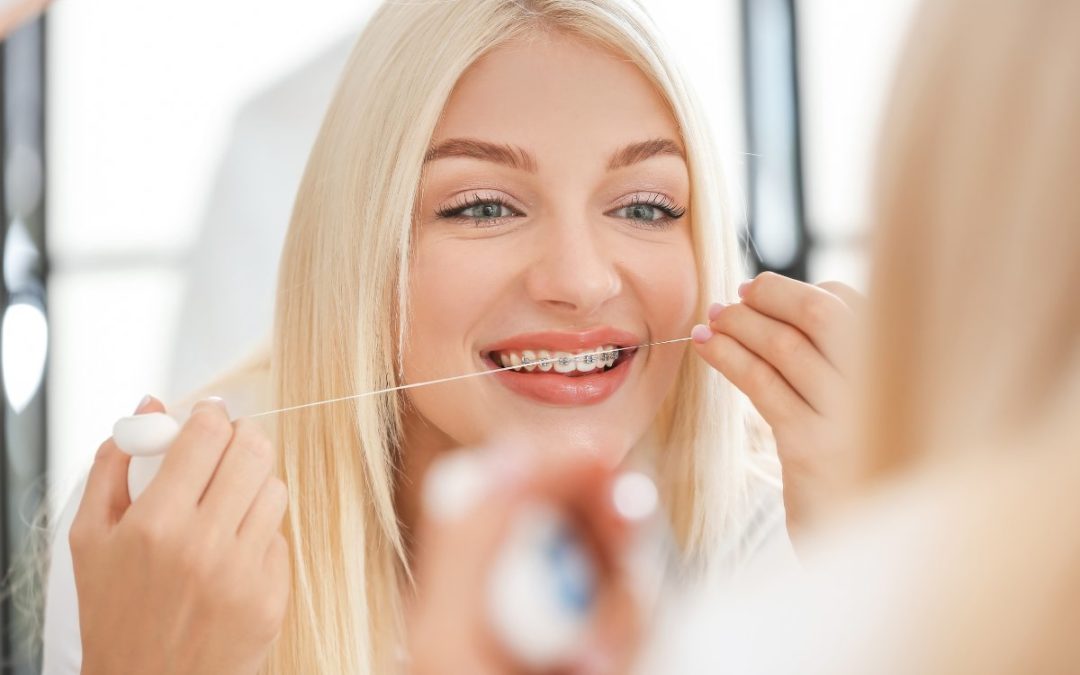Braces are amazing, they can give you a whole new smile! But they can also complicate things a bit. From having to think through if what you’re about to eat is safe for your braces, to practicing oral hygiene by cleaning around all those brackets and wires, life with braces can feel like a lot sometimes. The good news is, knowing the right tricks and tools can help. Here’s a handy guide on how to floss with braces to make things a little easier.
This blog post will guide you through effective flossing techniques specifically designed for braces wearers, helping you maintain a healthy smile throughout your treatment.
Why Flossing with Braces Matters
Flossing removes plaque and food debris from between teeth and under the gumline, areas that your toothbrush can’t reach. This is especially important with braces, as food particles can get lodged around wires and brackets, creating a breeding ground for bacteria. If left unchecked, this can lead to:
- Gum disease: Inflammation of the gums, which can cause redness, swelling, and bleeding.
- Cavities: Plaque buildup can lead to tooth decay, even around braces.
- Bad breath: Food particles trapped between teeth can contribute to unpleasant breath odor.
Flossing Techniques for Braces
There are a few different ways to floss with braces, depending on your comfort level and dexterity. Here are two common methods:
Traditional Floss with Floss Threader:
-
- Gather your supplies: You’ll need a strand of floss (around 18-24 inches long), floss threader (a small plastic tool), and a mirror.
- Thread the Floss: Slide the floss through the loop at the end of the threader.
- Navigate the Wire: Carefully insert the threader with floss attached under the main archwire of your braces.
- Flossing Technique: Hold the floss taut with your thumbs and index fingers, leaving about an inch of floss between them. Guide the floss between two teeth in a sawing motion, cleaning both sides of each tooth and reaching below the gumline.
- Repeat and Rinse: Use a fresh section of floss for each tooth space. After flossing, rinse your mouth thoroughly with water or mouthwash.
Interdental Brushes:
These small, disposable brushes can be easier to maneuver around braces than traditional floss.
-
- Choose the right size: Select an interdental brush that fits snugly between your teeth without forcing it.
- Gently Insert and Clean: Insert the brush between two teeth and move it back and forth in a gentle sawing motion. Clean between each tooth and under the gumline.
- Discard and Repeat: Discard the used brush after cleaning and use a new one for each space.
General Flossing Tips for Braces:
- Be gentle: Braces and gums can be sensitive, so avoid aggressive flossing that could cause irritation or bleeding.
- Take your time: Flossing with braces may take a bit longer than usual, so be patient and thorough.
- Floss at least once a day: Ideally, floss after every meal to remove trapped food particles.
- Don’t forget to brush: Flossing is not a substitute for brushing. Brush your teeth twice a day with fluoride toothpaste.
- Consult your dentist: If you have any difficulty flossing or experience persistent discomfort, talk to your dentist or orthodontist. They can recommend alternative flossing methods or address any concerns you may have.
By incorporating these flossing techniques into your daily routine, you can maintain a healthy smile throughout your braces treatment. Remember, a little extra effort now will contribute significantly to a healthy, beautiful smile in the future!
Call our Scottsdale Dental Office to make an appointment with a dentist who may be able to help you find out more about this topic, and improve your oral health.

